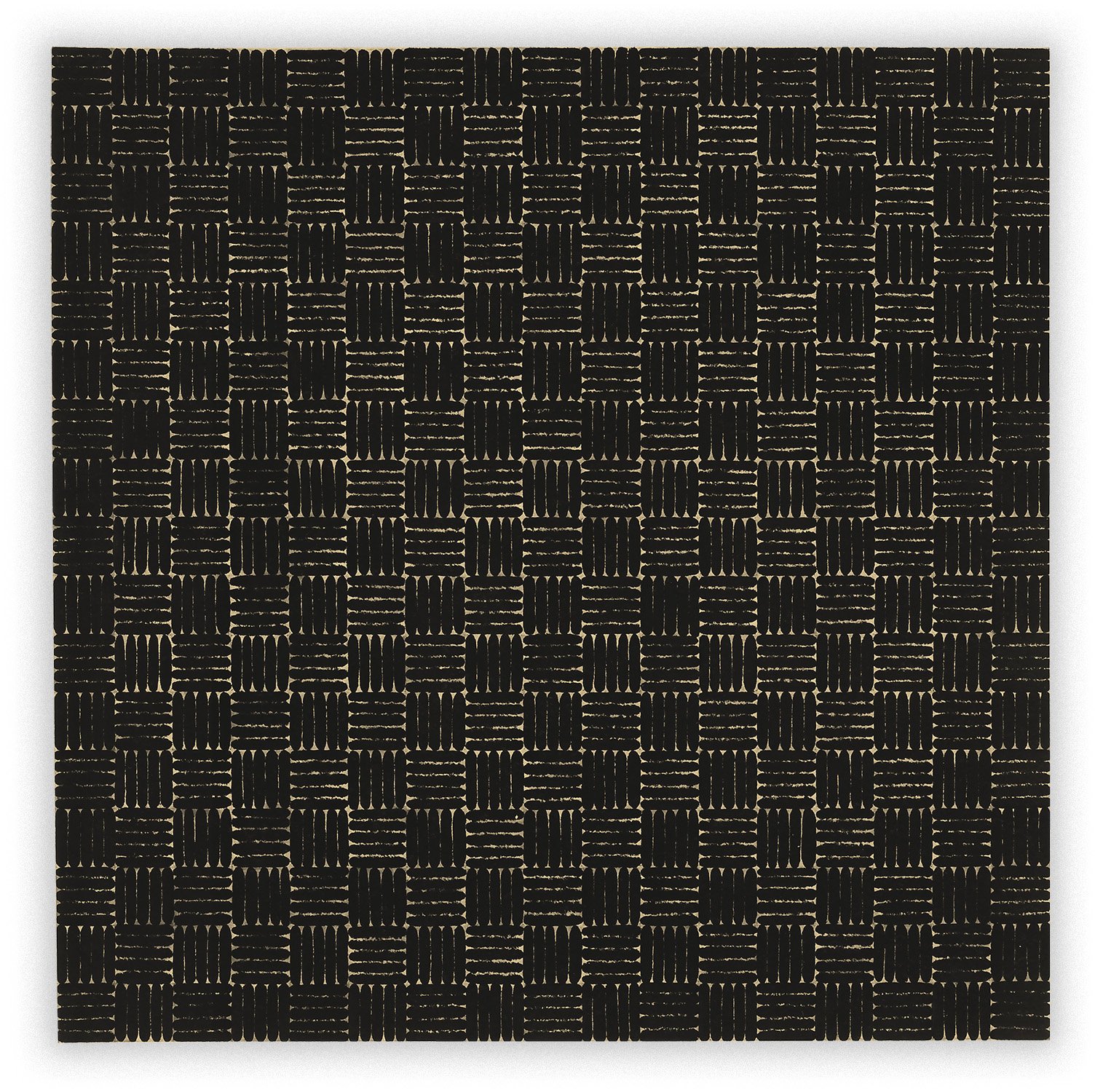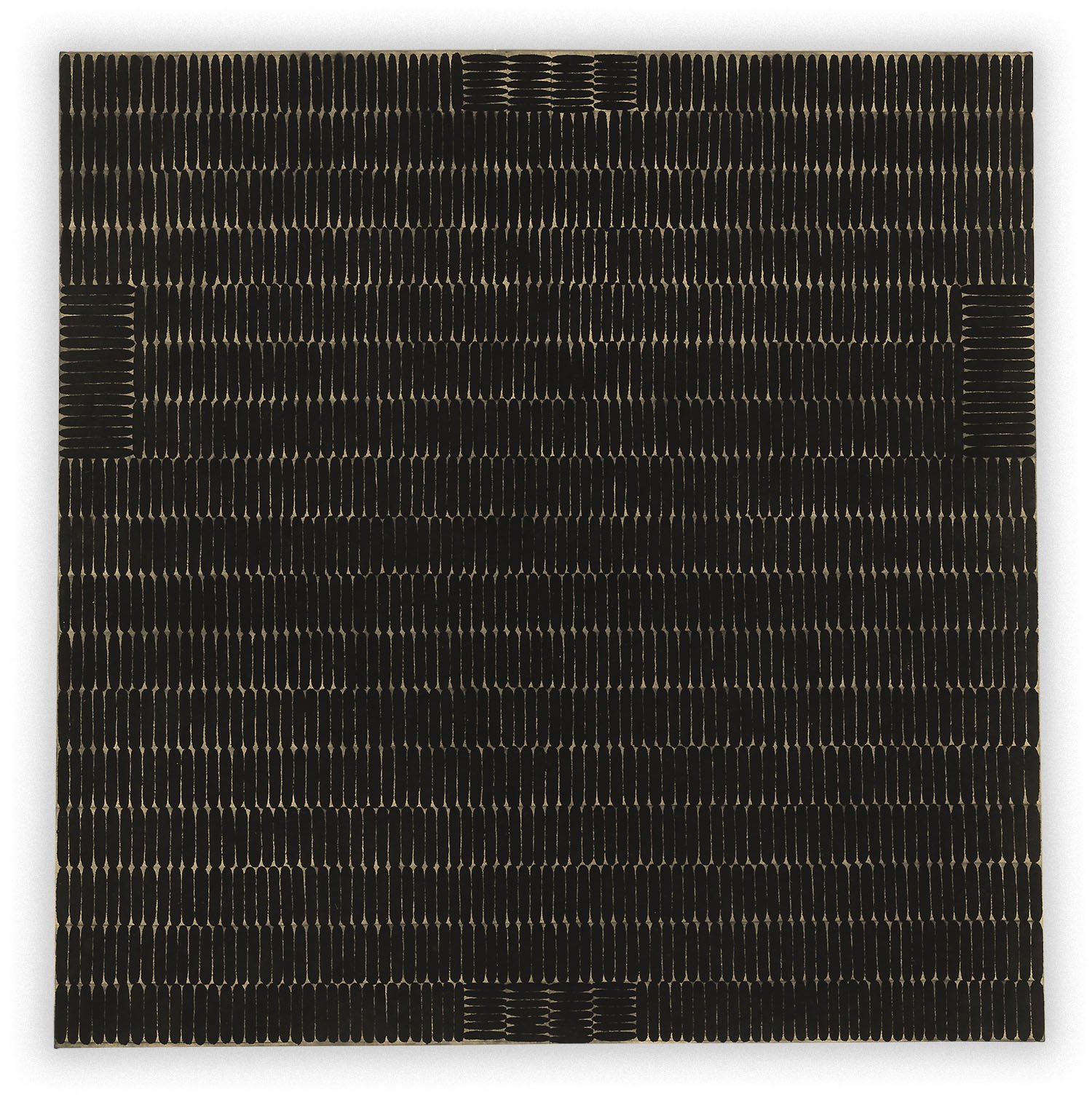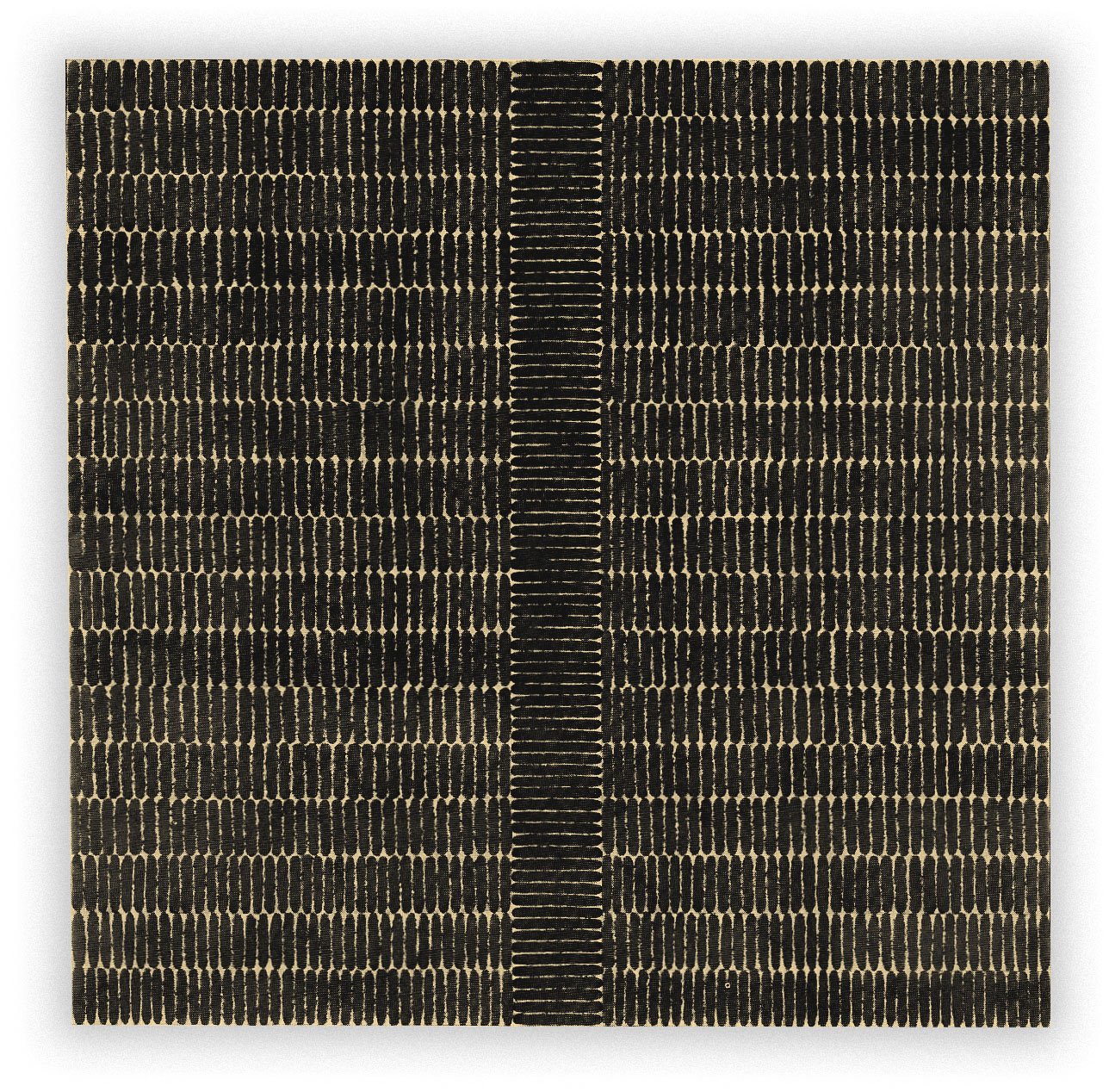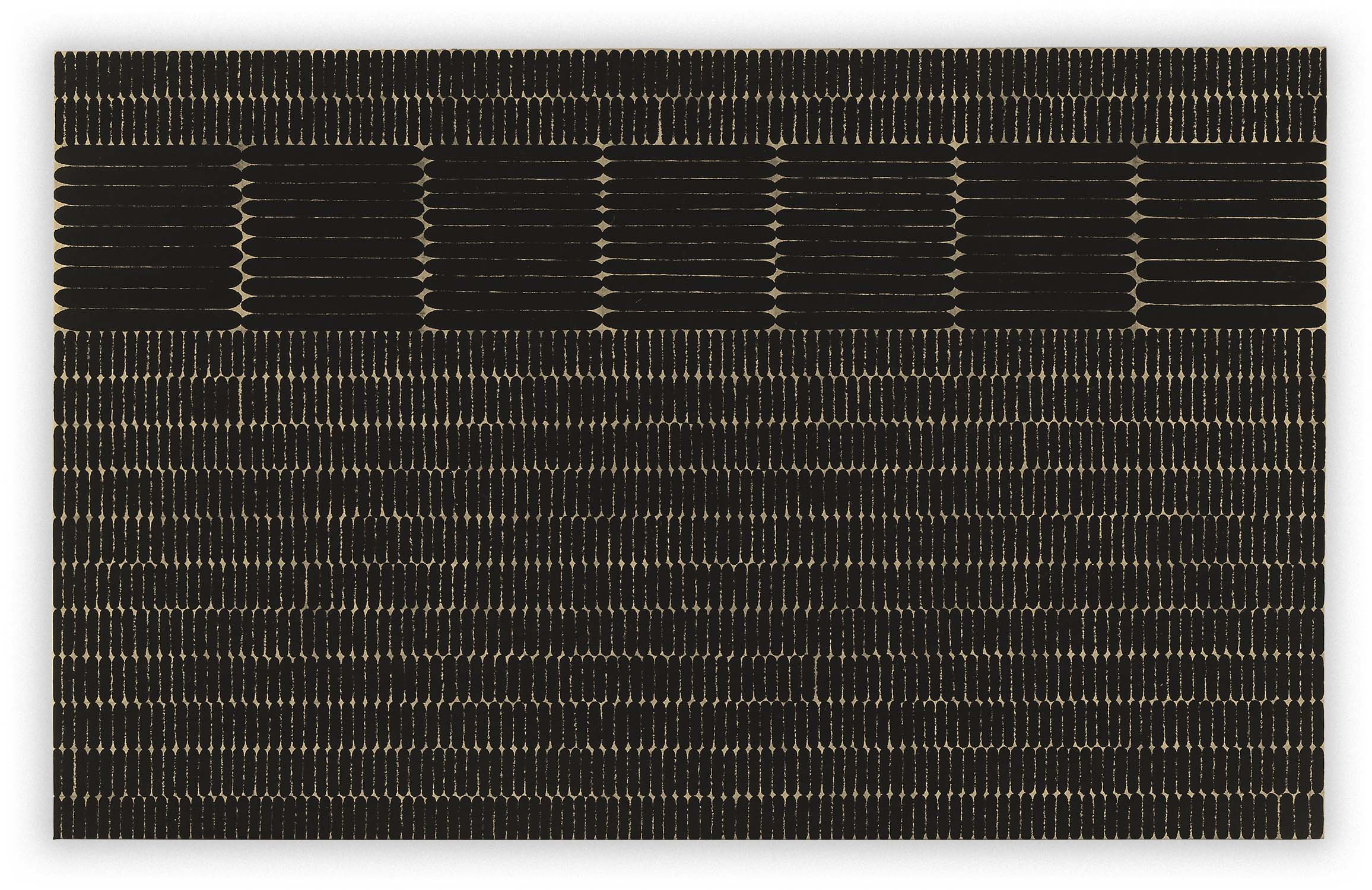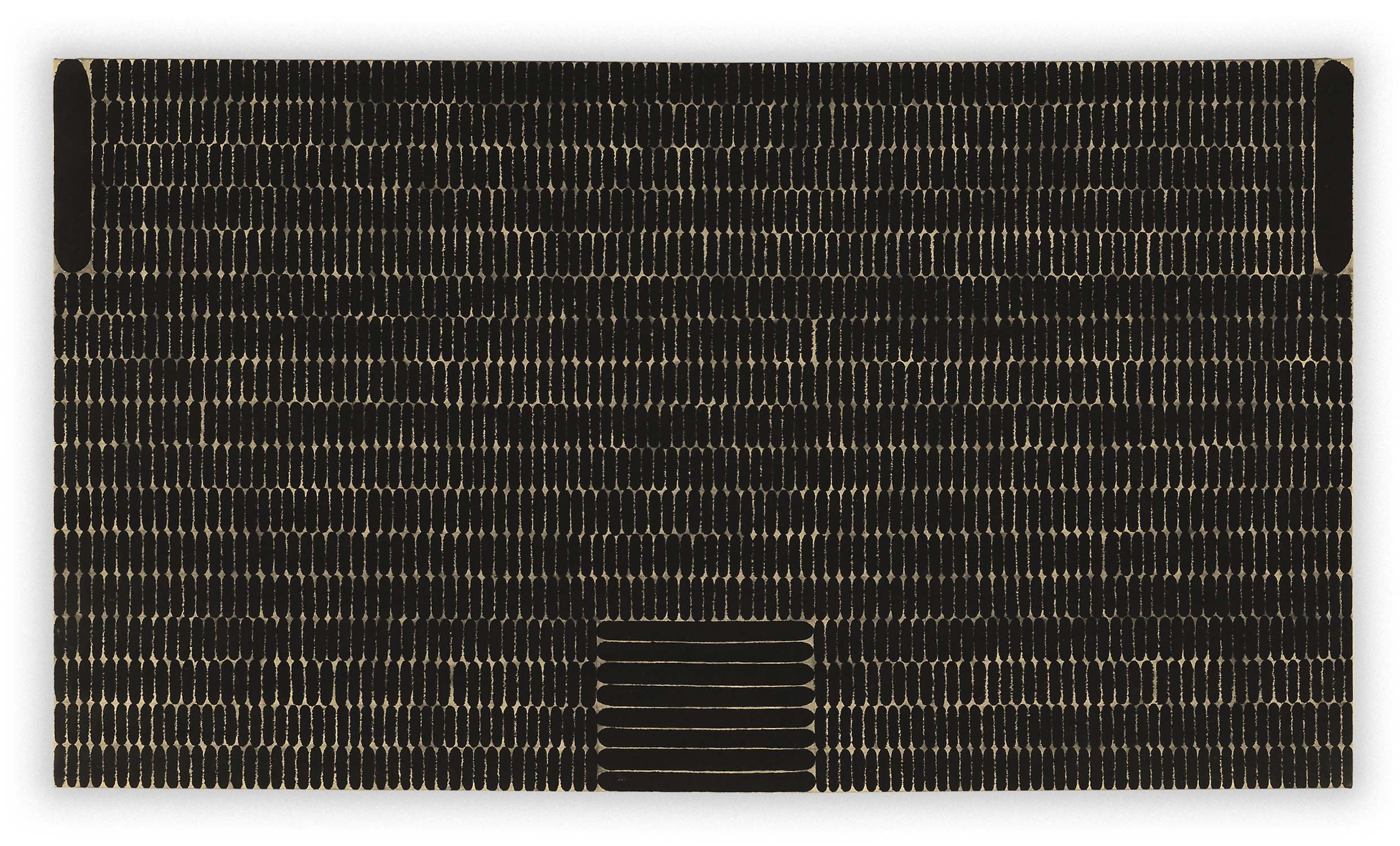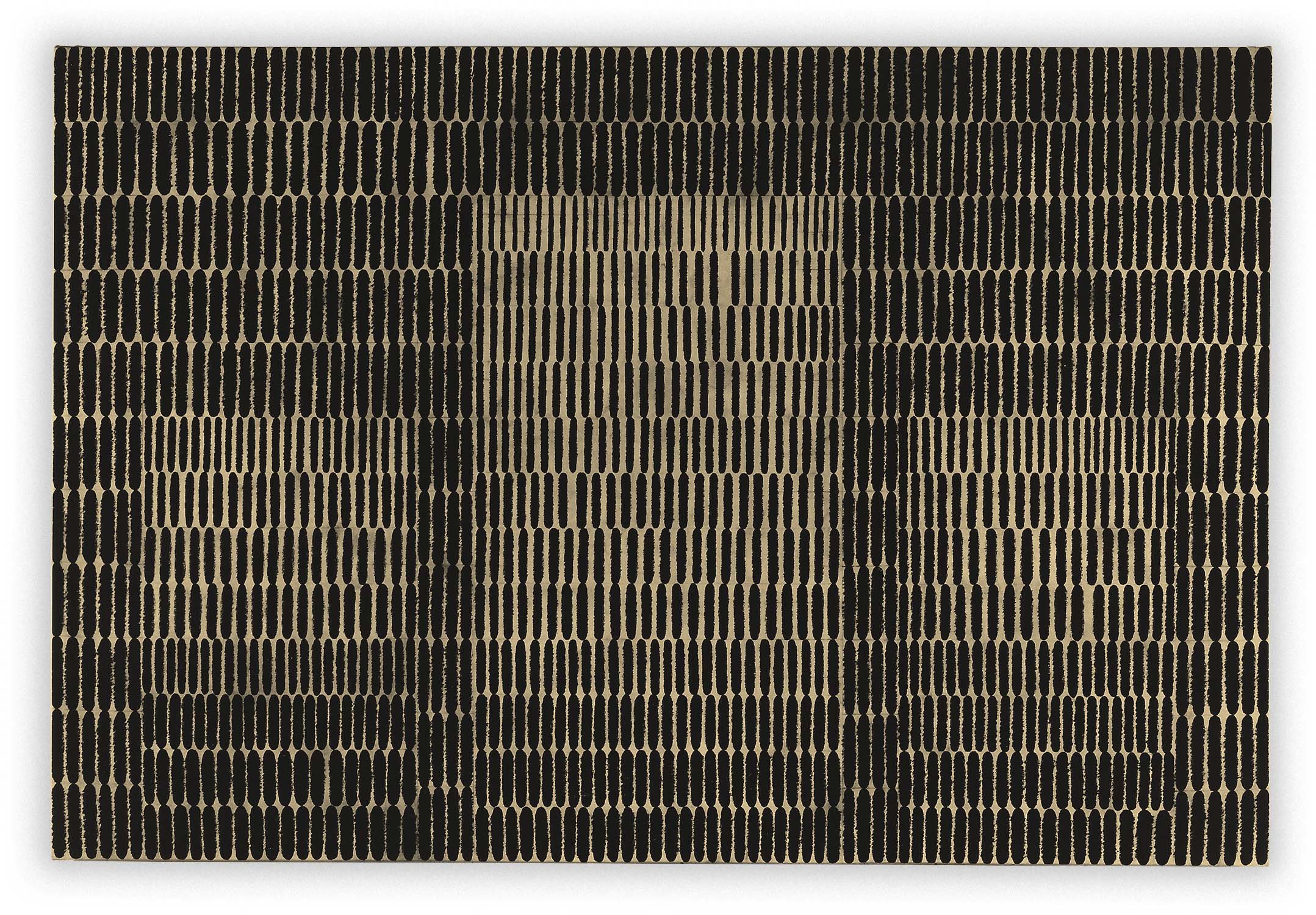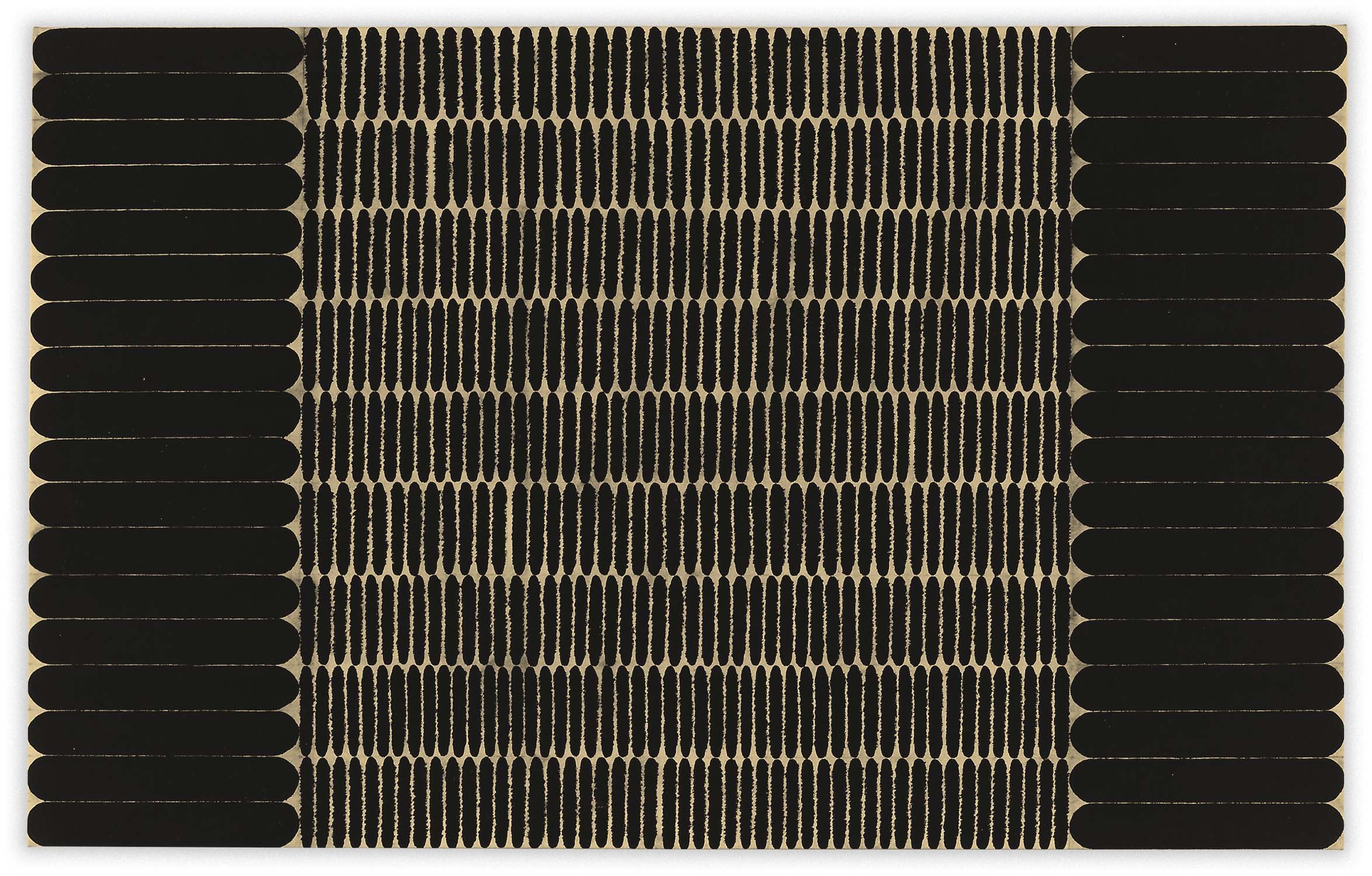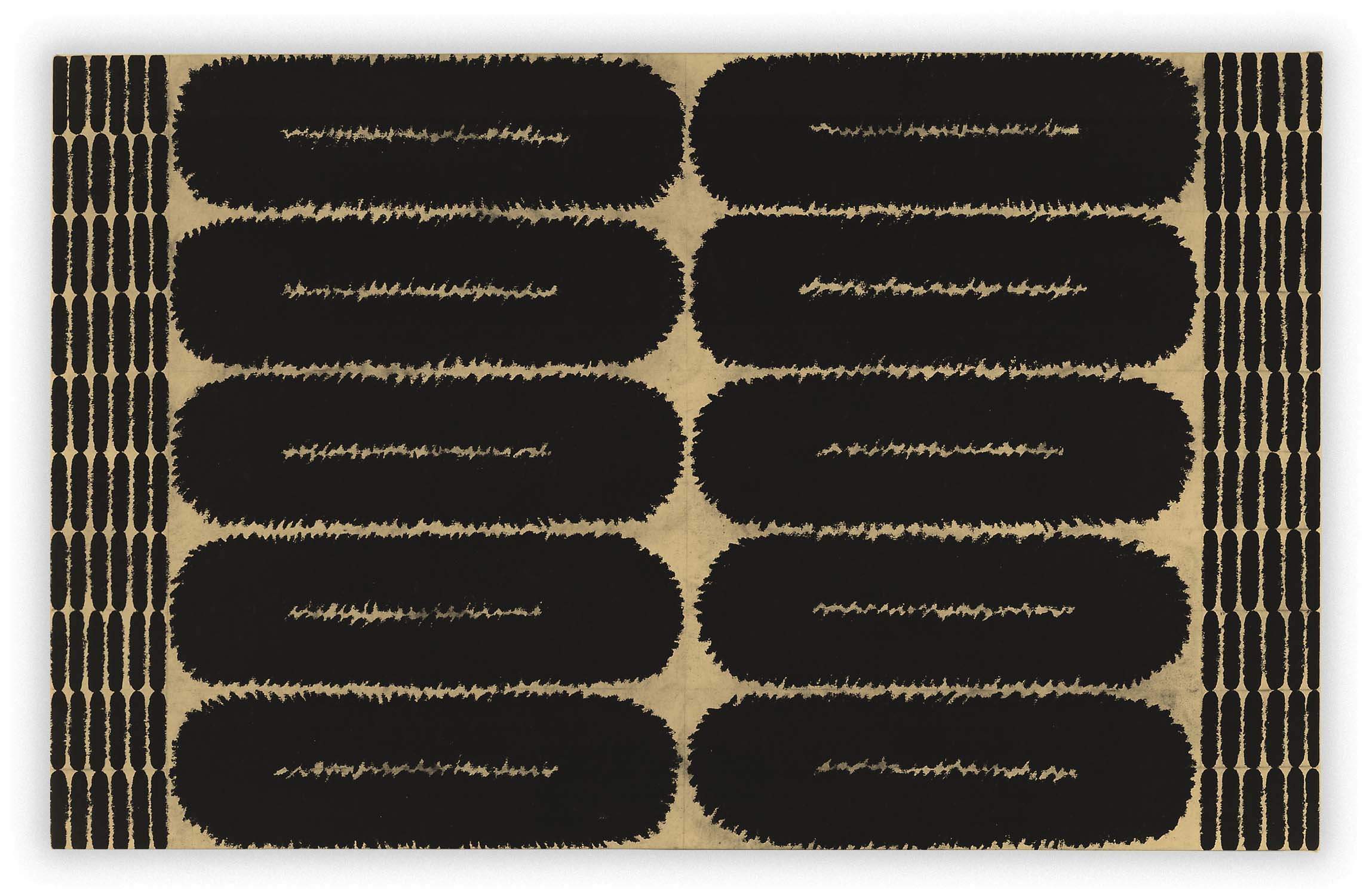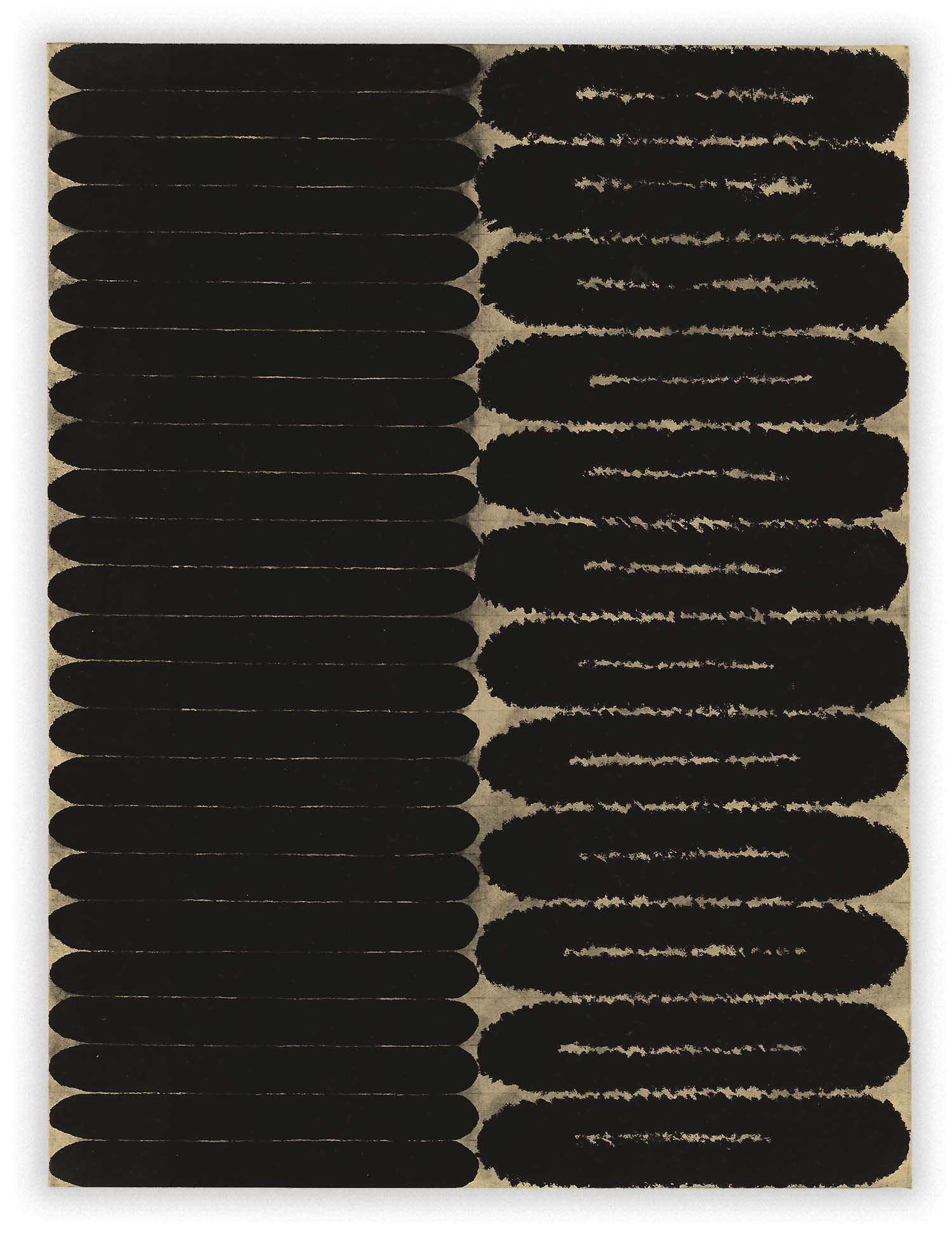It's a Jungle Out There...Not Because of the Gorillas but Because of The Ants, 1981 P(S)-11, 48 1/4 x 36 1/4 in. (122.6 x 92.1 cm) Oil stick and graphite on canvas, Collection of the Mead Art Museum at Amherst College, MA. Gift of Steven M. Jacobson (Class of 1953) (2013.14)
| “ | When I began stretching the black stroke pictures I felt completely vulnerable. No longer was there the escape of even the smallest border. The picture was locked in. The energy and nervousness was trapped in an intensity that almost made the picture pop. That those seemingly simple forms and just one color could emote so much showed me the real potential of my style of working. |
Prior to 1980, Witek intentionally leaves both the all-black and the stroke paintings unstretched but in 1980 she makes the definitive decision to begin stretching her canvases. Her first stretched painting In Between: A Thousand Peaks and Myriad Ravines, (left), draws inspiration from a New Guinea bark painting. Much similarity can be seen in the artist’s deliberate lozenge form and the tribal markings of the New Guinea bark works.
In 1980 William Lieberman of The Metropolitan Museum of Art visits Witek’s studio, he purchases two drawings from the Summer 1978 series which has proved so crucial for Witek’s artistic development and Split, (below) which she has painted a few months prior. In comparison to the strokes in Witek’s earlier work, those in Split are larger both in width and length resulting in a greater regularity in the composition of the painting. The marks in their magnification, reveal the inherent imperfections of the freeform marks themselves. Witek describes these as ‘glitches’ emphasize their individual nature.
In 1983 The Museum of Modern Art purchases Memories of Underdevelopment (below) painted in 1981. The title is inspired by a Cuban film Memorias del Subdesarrollo, by Tomás Gutiérrez Alea, released in 1968. It is one of the first examples of Witek using a format other than square as a starting point in her work. Prior to this she has worked almost exclusively with square canvases typically six by six feet. Witek writes in her studio notes: “the horizontals seemed very gross. To me they seemed barbaric - like billy clubs - compared to the delicacy of the four-inch-high strokes.” Her experience of the burden of weight in the horizontal elements are perhaps her clearest expression to date of the emotional content intrinsic for her in the character of the strokes and the effect of their relative proportions.
After the summer of ’81 Witek enters into another experimental phase which comes to its fullest expression with the painting she titles Introductory Glyph, the drawing for which is also included in the Metropolitan Museum’s collection. “An Introductory Glyph is a term that is used in Pre-Columbian studies to signify the beginning of a Mayan hieroglyphic text. It situates the interpreter at the time and place to which the message will refer. This was a perfect fit metaphorically for my work.”
In 1984 the Museum of Art, Carnegie Institute, Pittsburgh presents a solo exhibition of Witek’s work curated by Jonathan Caldwell: Joan Witek: Paintings, 1980 - 1983 and Joan Witek: Drawings, 1976 - 1984. In discussion with Caldwell, Witek states: "I wished to reconcile abstraction and feeling… The irony of the work […] is in appearing to be simple and easily grasped visually while an ongoing language of proportion and content precedes through each work. Each painting depends on the others for interpretation. They are a handwriting. Although the writing style is relatively uniform, each picture has a uniquely based origin in my emotions or wherever a particular painting comes from. It’s themes are the art of painting, or my perceptions of the world, or the renderings of my insides.”
Solo exhibitions include Joan Witek at Rosa Esman Gallery, New York (’84 & ’85), Joan Witek: Paintings 1980 - 1983, Drawings 1976 - 1984 curated by John Caldwell at the Museum of Art, Carnegie Institute, PA and Joan Witek at John Davis Gallery, NY (’87 & ’88). Group exhibitions during this decade include: Black Painting Show curated by Ellen Schwartz (’82), Women in the Making of Art History at the Art Students League, NY (’82), Thirty Painters: Recent Acquisitions at the Metropolitan Museum of Art, NY (’82), Curator’s Choice at the Metropolitan Museum of Art, NY (’82), Selections in Contemporary Art at the Westport-Weston Arts Council, CT (’83), Twentieth-Century Art from the Metropolitan Museum: Selected Recent Acquisitions at the Queens Museum, NY (’83), From Avery to Zurbaran: A View of the Permanent Collection at the Santa Barbara Museum of Art (’84), Art on Paper 1985 at the Weatherspoon Art Gallery, University of North Carolina (’85) and in the Contemporary Galleries at MoMA, NY (’85) in recent acquisitions alongside other notables such as Louise Bourgeois, Sol Lewitt, Isamu Noguchi, Jules Olitski and Martin Puryear.

